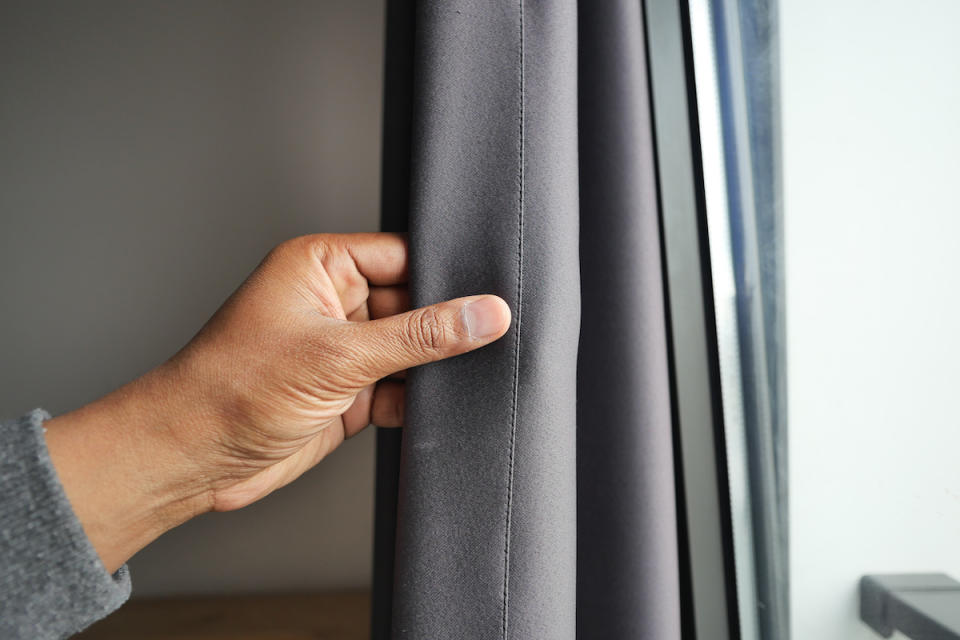This Is the Right Way to Wash Your Curtains, According to Experts
We may earn revenue from the products available on this page and participate in affiliate programs. Learn More ›

Curtains are a key part of a comfortable living space. They provide privacy while filtering light and even providing heat and sound insulation. Over time, however, they can accumulate dust, pet hair, and other allergens. Keeping your curtains clean not only freshens up your home but also prolongs the life of your window treatments, ensuring you can enjoy them for years to come. Generally speaking, it’s best to deep clean your curtains two to three times per year. This guide will walk you through the best methods for washing your curtains, whether they’re machine washable, hand-washable, or require professional cleaning. Let’s dive into how to wash curtains. Tools & Materials Bobvila.com may earn a commission from purchases made through these links. Vacuum cleaner with upholstery attachment Large basin or bathtub Drying rack Towels Iron (optional) Mild detergent Lint roller Project Overview Working Time: 1-2 hoursTotal Time: 3-4 hoursSkill Level: BeginnerEstimated Cost: $10-$50 Before You Begin Before you start washing your curtains, check the care label for specific washing instructions. Daniel Brown, CEO of Handy Cleaners in London, England, says, “This can usually be found on a sewn-in label on the inside part of the [item] that will usually include fabric content and cleaning instructions.” Following these instructions will help prevent damage such as shrinkage or color fading. Andriy Neborak, founder and CEO of New York City-based Luxury Cleaning NY, says, “Dry cleaning might be necessary for silks and velvets.” If your curtains don’t have a care label or if it has faded over time and become indecipherable, it’s best to default to hand-washing. STEP 1: Dust and vacuum. Photo: istockphoto.com Start by removing dust and debris from your curtains. Eliana Coca, owner of E.C. House Cleaning in Spencer, Massachusetts, advises, “Regular maintenance like vacuuming can extend the time between deep cleanings and keep your curtains looking fresh.” Use a vacuum cleaner with an upholstery attachment, working from the top down in gentle sweeping motions. For delicate fabrics, a lint roller can effectively pick up stubborn dust particles and embedded pet hair. Shake out the curtains outdoors to remove any leftover dirt and debris. If your curtains need to be dry cleaned, now’s the time to take them to a trusted dry cleaner or contact a curtain cleaning service. STEP 2: Spot clean stains. Photo: istockphoto.com If there are any visible stains on your curtains, treat them before washing. Mix a small amount of mild detergent with warm water and use a clean white cloth to gently blot the stain. Avoid rubbing, as this can push the stain deeper into the fabric. Once treated, rinse the area with clean water and blot dry with a clean towel. STEP 3a: Machine wash (if applicable). Photo: istockphoto.com Many types of curtains are machine washable. Still, it’s important to exercise caution and follow the laundering instructions found on the care tag. Muffetta Krueger, founder of Muffetta Housekeeping in southeastern New York, says, “Always wash curtains on a gentle cycle with cold water and mild detergent to prevent any fabric damage.” Here are the steps for cleaning machine-washable curtains: Remove hardware: Take off any hooks, rings, or other removable hardware. Choose your cycle: Select a gentle cycle with cold water. Add detergent: Use a mild detergent to avoid damaging the fabric or fading the colors. Wash separately: Wash heavy curtains individually to avoid overcrowding the machine. STEP 3b: Hand-wash (for delicate fabrics). Photo: istockphoto.com Luke Schwartz, brand president of Bumble Bee Blinds, says, “Hand-washing is the best method for delicate curtains to avoid damage and maintain the fabric’s integrity.” Here’s how to do it: Fill basin: Fill a large basin or bathtub with lukewarm water. Add detergent: Dissolve a small amount of mild detergent in the water. Submerge and agitate: Submerge the curtains and gently agitate them with your hands. Rinse thoroughly: Drain the soapy water and rinse the curtains until all the soap residue has been removed. STEP 4: Dry the curtains. Photo: istockphoto.com After washing, it’s time to dry your curtains. Brown says, “Air-drying curtains is the safest method to prevent shrinkage and maintain their shape.” Neborak agrees, saying, “Heat can either make your curtains shrink or ruin them in other ways entirely. Instead, hang them outdoors in the shade or indoors on a drying rack. Smooth out creases while the curtains are still damp.” Remove excess water: Gently squeeze out excess water without wringing the fabric. Drying rack: Hang curtains on a drying rack or lay them flat on clean towels. Avoid sunlight: Keep curtains away from direct sunlight to prevent fading. STEP 5: Iron and rehang. Photo: istockphoto.com Once dry, iron your curtains to remove any wrinkles. Use the appropriate temperature setting for the fabric. Reattach any hardware and rehang the curtains, ensuring they are evenly spaced for a polished look. Final Thoughts Cleaning your curtains may seem daunting, but with these curtain-cleaning methods, you can keep them looking their best. By regularly dusting, spot cleaning, and washing your curtains according to the care label, you’ll ensure they look great and last longer. Remember, using the right drape-cleaning method for your specific curtain type is crucial to avoid damage.

